Here at HDTVTest, we’ve not reviewed a top-end Sony Bravia HDTV in some time, so naturally, we jumped at the chance to give the company’s highest-specced LED LCD TV a thorough inspection. The Sony KDL-46HX923 features a Full HD LCD panel, 3D display capability, 4 HDMI inputs, a Freeview HD tuner, and in what is sure to be the standout feature for video enthusiasts, LED local dimming, allowing contrast performance beyond that of typical CCFL-backlit and edge LED LCD televisions.
<!-- google_ad_client = 'pub-2887677957235196'; google_ad_slot = '4990177225'; google_ad_width = 336; google_ad_height = 280; //-->
Although it’s the priciest out of all of Sony’s HDTVs this year, some additional accessories are included to soften the financial blow: the HX923 ships with two pairs of Sony’s new 3D glasses, and in what we think is a first for any manufacturer, a webcam/ microphone communication unit, which can be used with this internet-capable TV’s Skype-calling functionality.
Will the Sony KDL-46HX923 set a new standard for LED LCD image quality? Let’s find out…
Note: The specific model we tested was the Sony KDL46HX923BTN, which denotes the 3-pin-plug British version. While we did not review the 55-inch Sony KDL-55HX923, there should not be any drastic difference in picture performance given similar specifications bar screen size.
Jump To: Operation • Calibration • Picture Performance • Conclusion
Although it’s easy enough on the eyes, we think it’s a shame that the Sony KDL-46HX923 doesn’t look as stunning or as distinctive as flagship Sony displays from the past (we’re thinking of the sophisticated-looking X2000 or X3000 series, or even just the iconic 2005 V-Series, which launched the BRAVIA brand back in 2005 and made black TVs the “in” thing again, when silver plastic was the done thing in the TV market).
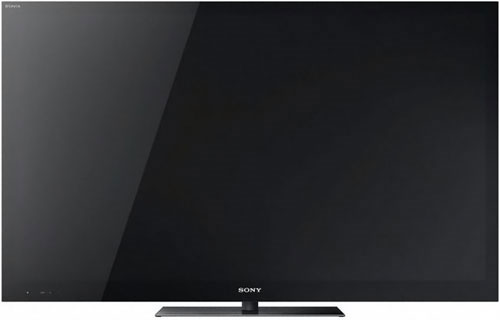
The Sony HX923 is styled in dark, shiny black, has a thin bezel surrounding the 46″ LCD panel, and a grey-blue illuminated Sony logo below. It’s also remarkably thin, despite the fact that this 3D TV features LED local dimming. The television has a “one-sheet-of-glass” design, with the edge where the LCD panel meets the bezel being invisible when it’s turned off.
The tabletop stand is styled with a “brushed-steel” effect. Assembly was fairly straightforward, and afterwards, the panel sat firmly on top of the stand, giving us no concerns about the completed unit’s stability.
The Sony KDL-46HX923 features 4 HDMI inputs, which is the standard for modern HDTV displays, and should serve almost everybody. SCART and Component interfaces are also accommodated via break-out adapter cables supplied in the box. The back panel also features a PC “VGA” input, 2 USB inputs, an optical audio output, and a LAN socket for users who want to connect to the internet without using the HX923’s built-in wireless connectivity. Naturally, there’s also an RF input for feeding the DVB-T2 Freeview HD tuner.
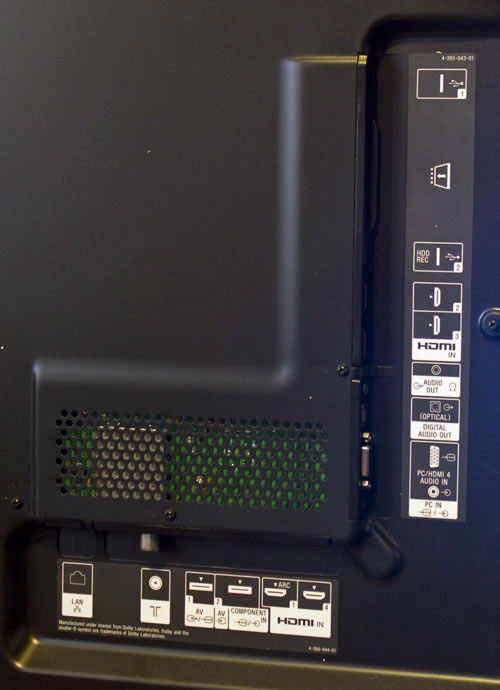 |
| Rear: 4 x HDMI, VGA, Component, SCART, aerial, ethernet & audio outs |
We’re glad to see that, unlike Sony’s first 3D TVs, no additional 3D “transmitters” are required: the KDL46HX923 is ready to go with 3D, straight out of the box. Interestingly, this 3DTV also has a small camera mounted on its front, which can be used with the “Distance alert” feature – the purpose of which, apparently, is to detect faces and warn children when they sit too close to the screen. It seems a little wasteful for Sony to include a camera for this purpose in the TV, but then use a separate webcam unit for the TV’s Skype-calling feature… perhaps they’ll become one on a future model?
The same menus as we spotted on lower-end 2011 Sony HDTVs are present on this top-end model, with one critical difference: they respond faster to user input. We still feel they’re a little cluttered, and we don’t like the fact that calling up the menu while watching 3D content will cause a delay while the HX923 switches back to 2D mode, and then back into 3D once you choose to access the Picture menu.
The user scrolls left and right to select a main category, then up and down to select options within. After selecting an option, the interface changes slightly, with settings appearing on the left side of the screen, using the same layout as on older Sony televisions. Most of the adjustments that are of interest to us are in the “Display” menu. “Picture” houses most of the video controls, although a separate “Screen” menu is used to configure 4:3 content display and Overscan settings.
![[Picture] menu](https://www.hdtvtest.co.uk/news/wp-content/uploads/2018/04/hdtv_Sony-KDL46HX923_menu2.jpg) |
| [Picture] menu |
The top-level adjustment on Bravia televisions is actually the “SCENE” menu, accessed by the dedicated remote control button. There are various different modes in here, the idea being that the user will select a different mode (with different picture and sound settings) to somehow suit different genres of programme or film. Since we’re calibrating the Sony KDL-46HX923 for accuracy, we won’t be hopping around the picture modes like this, so we selected the “Cinema” mode. This gives the most untouched, true-to-spec image in the TV’s out-of-the-box state. The other mode of interest to us is “Game”, which cuts out some video processing to speed up responsiveness for gaming or computer use.
This selection, in turn, determines what [Picture Mode] settings are visible in the “Picture” menu. With the “Cinema” scene mode selected, there are two Picture Modes, [Cinema 1] and [Cinema 2], which are perhaps intended to replicate the separate Day and Night modes seen on some other displays. Underneath this, there are standard adjustments for Backlight intensity, Contrast, Brightness, Colour, Hue (which is active for all signal types), Colour Temperature, and Sharpness.
An [MPEG Noise Reduction] filter discards high frequency picture detail in an attempt to curb mosquito noise and visible block edges in overcompressed Digital TV content (we are not fans of this – “sow’s ear, silk purse” is the phrase that comes to mind), whereas [Dot Noise Reduction] detects and effectively filters the “crawling ants” (dot crawl) that can be seen on coloured edges on older Composite video material (think older TV shows, and even some newer US-sourced productions). This is active on all signal types, not just direct Composite input – useful for when old Composite master tapes have been dusted off and used for Digital TV broadcasting, and the broadcasters haven’t done the dot noise reduction themselves.
Next is [Reality Creation], an interesting adjustment which is best described as a highly configurable edge enhancement/ sharpening system. We’ll look into this in more detail later in the review. Then, there’s [Smooth Gradation], a useful control which appears to be the same as the “Smoothing” feature found on some of Sony’s high-end Blu-ray Disc players. This feature detects and fixes contouring in video images, for example, a clear blue sky that, due to contouring artefacts, appears to be made out of separate ridged bands. All consumer-level video sources use 8-bit precision, which can sometimes cause this contouring/ banding to appear, especially in content that doesn’t have film grain or other image noise to conceal the effect. The KDL-46HX923’s video processor operates at the 14-bit level, allowing such content to be effectively upsampled. We’re not sure what depth the LCD panel is fed at, though – we’d imagine that it’s at lower precision (10-bit, perhaps?) and that some of those bits are used for processing overhead.
The next important control is [Motionflow], which is Sony’s frame interpolation system, designed to reduce LCD motion blur. We checked out all the settings using a scrolling motion resolution test chart and found that “Clear” and “Clear Plus” were obviously superior to the other modes. We used “Clear Plus” since it appeared to bring a very, very slight increase in motion clarity without obviously dimming the picture.
The [Advanced Settings] menu screen consists mainly of controls that are redundant as far as our quest for accurate picture quality is concerned. The useful options are the basic [Gamma] curve adjustment, the [LED Dynamic Control] (which we’ll explore later in the review), and the [White Balance] adjustment menu for calibrators. There are still no colour management controls on this flagship Bravia, but this may not be too big an issue if the colour reproduction is good to start with and doesn’t need correction.
Note: Our Sony KDL-46HX923 review sample was calibrated using Calman Professional, the industry-leading video calibration software.
After we selected the [Cinema 1] mode, we ensured that the KDL46HX923 was configured to have the best fighting chance at producing accurate pictures without specialist calibration. In other words, we turned off features like the [Auto Light Limiter] and [Advanced Contrast Enhancer] to approximate how the LED TV could be expected to perform for users who want accurate-ish picture quality, but don’t want to pay for a full-scale calibration.
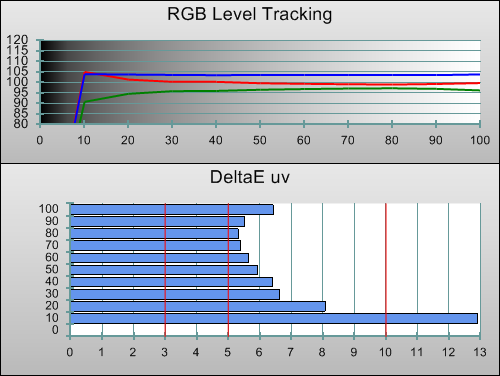 |
| Pre-calibration RGB tracking and delta errors (dEs) |
Accuracy was relatively good in this mode, being on par with competing HDTVs bearing THX Certification (Sony’s don’t, but as the above data shows, they’ve done well on their own). Although the image had a touch too much blue throughout, linearity was excellent, with the same amount of blue bias being present at roughly all brightness levels. This bodes well for calibration.
![Post-calibration RGB Tracking in [Cinema 1] mode](https://www.hdtvtest.co.uk/news/wp-content/uploads/2018/04/hdtv_Sony-KDL46HX923_post-rgb.png) |
| Post-calibration RGB tracking and dEs in [Cinema 1] mode |
We managed to reduce colour tinting errors to basically unnoticeable levels at most points, but due to the coarse nature of the low-end [White Balance] controls, we couldn’t fix an excess of blue at 10 and 20% stimulus. This is somewhat disappointing, since the HX923’s 14-bit video processor should surely allow for much finer corrections than this. The presence of a 14-bit video processor leads us to believe that this lessened level of adjustability is down to the way the user interface controls are implemented, rather than an actual hardware limitation. Fortunately, the resulting errors weren’t hugely problematic, although we would have appreciated greater control, seeing as this is not a cheap HDTV.
![Gamma curve in [Cinema 1] mode](https://www.hdtvtest.co.uk/news/wp-content/uploads/2018/04/hdtv_Sony-KDL46HX923_post-gamma.png) | |
| Gamma curve in [Cinema 1] mode | Corresponding gamma tracking |
We had no complaints whatsoever about the ruler-flat Gamma tracking the Sony KDL-46HX923 achieved after calibration. We’ve seen LED-assisted local-dimming LCD TVs before that have introduced severe Gamma inaccuracies, but Sony has got the relationship between the input video signal and the intensity of the LED clusters perfect, so no obvious brightness errors are introduced. The same excellent performance was true when we measured with both standard patterns and also specialised APL (Average Picture Level) patterns, which was very encouraging indeed.
Before calibration, the KDL-46HX923 was hitting its primary and secondary colour targets fairly accurately. They Greyscale calibration we just performed above did make a small improvement to the accuracy of the secondary colours. Finally, we nudged the [Tint] control one click towards the right to bring about a small improvement to the accuracy of cyan and magenta.
![Post-calibration CIE chart in [Cinema 1] mode](https://www.hdtvtest.co.uk/news/wp-content/uploads/2018/04/hdtv_Sony-KDL46HX923_post-cie.jpg) |
| Post-calibration CIE chart with reference to HD Rec.709 |
Sadly, the Sony KDL-46HX923 can’t fully saturate red, and to a more severe extent, blue, which does look a little purple-ish to those of us used to displays with perfectly accurate colour. Since this appears to be a panel limitation, we wouldn’t have been able to do anything about this even if we’d had access to a full Colour Management system (CMS).
![Post-calibration Luminance levels in [Cinema 1] mode](https://www.hdtvtest.co.uk/news/wp-content/uploads/2018/04/hdtv_Sony-KDL46HX923_post-colour-lum.png) |
| Post-calibration colour luminance (coloured bars = targets; black bars = measured values) |
The KDL-46HX923’s colour decoding was very accurate indeed, meaning that even in areas where the saturation and hue (measured above) weren’t fully accurate, the brightness of each colour was correct, which is arguably more important. The brightness of each colour – especially red – was already correct without the need for any adjustment of the [Colour] control.
After wearing one pair of the supplied Sony TDG-BR250 3D glasses and using it to confirm the out-of-the-box 3D [Brightness] setting was correct, we attached the glasses to the front of our Klein K-10 calibration meter and ran a series of measurements to gather data regarding the accuracy of the KDL46HX923’s 3D [Cinema] mode.
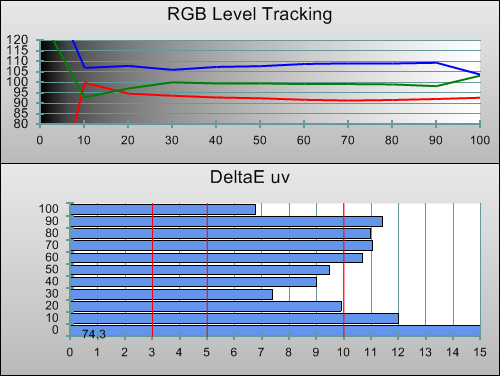 |
| 3D Pre-calibration RGB tracking and delta errors (dEs) |
The final 3-dimensional image, as viewed through the 3D eyewear, was slightly blue-tinted. The slight excess of blue was, again, very consistent, except at 100% stimulus, which had an obvious colour tint. This is the result of Sony’s factory settings having [Contrast] turned up to its maximum level, presumably to counter the darkening effect of the active-shutter glasses. They needn’t have bothered, since the KDL-46HX923 produces exceptionally bright images even in 3D, without the need for throwing away highlight details and introducing such digital thresholding errors.
![3D Post-calibration RGB Tracking in [Cinema 1] mode](https://www.hdtvtest.co.uk/news/wp-content/uploads/2018/04/hdtv_Sony-KDL46HX923_3d-post-rgb.png) |
| 3D Post-calibration RGB tracking and dEs in [Cinema 1] mode |
The colour tint at 100% stimulus was remedied by lowering [Contrast] to 85 (from its default of 100), which still produced a very bright image. Adjusting the R, G and B-Gain controls allowed us to neutralise colour tinting in brighter areas of the image. Shadowed areas were less precise due to the coarse nature of the low-end controls, although the resulting errors were only slight. All in all, the Greyscale tracking quality in 3D is very good indeed – leagues ahead of the very first 3D Plasmas.
We dropped the [Colour] control by 2 clicks (to position 48), which was the optimal position for the luminance level of Red. That’s the only colour refinement we could really make, since the Sony KDL-46HX923 doesn’t feature a colour management system. We also experimented with the [Tint] control, but it was best left in its default/ neutral state. Regardless, accuracy was very good indeed, with only slight deficiencies in saturation being visible compared to the 2D mode.
![3D Post-calibration CIE chart in [Cinema 1] mode](https://www.hdtvtest.co.uk/news/wp-content/uploads/2018/04/hdtv_Sony-KDL46HX923_3d-post-cie.jpg) |
| 3D Post-calibration CIE chart with reference to HD Rec.709 |
![3D Post-calibration Luminance levels in [Cinema 1] mode](https://www.hdtvtest.co.uk/news/wp-content/uploads/2018/04/hdtv_Sony-KDL46HX923_3d-post-colour-lum.png) |
| 3D Post-calibration colour luminance (coloured bars = targets; black bars = measured values) |
| Dead pixels | None |
| Screen uniformity | Some brightness differentiation; no tints; no crease on our sample |
| Overscanning on HDMI | 0% with “Full Pixel” turned on |
| Blacker than black | Passed |
| Calibrated black level (black screen) | 0 cd/m2 (LEDs turn off) |
| Calibrated black level (ANSI checkerboard) | 0.05 cd/m2 |
| Black level retention | Stable with [Advanced Contrast Enhancer] off |
| Primary chromaticity | Very Good |
| Scaling | Very Good |
| Video mode deinterlacing | Excellent jaggies reduction |
| Film mode deinterlacing | Passed 2-2 PAL and 3-2 NTSC tests in SD and HD |
| Viewing angle | Excellent for an LCD TV |
| Motion resolution | 1080 with [Motionflow]: “Clear Plus” |
| Digital noise reduction | Optional |
| Sharpness | Defeatable edge enhancement |
| Luma/Chroma bandwidth (2D Blu-ray) | Full Luma, horizontally blurred chroma except in “Game” and “Graphics” modes |
| 1080p/24 capability | No judder in 2D or 3D |
| Input lag | 31ms compared to lag-free CRT |
| Full 4:4:4 reproduction (PC) | Yes, in “Game” and “Graphics” modes |
| Default [Auto] mode (2D) | 70 watts |
| Default [Auto] mode (3D) | 127 watts |
| Calibrated [Cinema 1] mode (2D) | 56 watts |
| Calibrated [Cinema 1] mode (3D) | 73 watts |
| Standby | 1 watt |
Figures taken with full 50% grey screen.
Since the Sony KDL-46HX923 features a locally-dimmed LED backlight array, it’s capable of achieving some impressive contrast performance by dimming the brightness of the LED light clusters relative to the brightness of the video signal. For example, a large area of fully black pixels can have the lighting behind the appropriate area behind the LCD panel turned off entirely to produce true black (0 cd/m2). Unsurprisingly, a full black screen returned this result when measured.
This process isn’t perfect, of course: there are only so many different LED zones to serve all 2073600 pixels, meaning that like any other local-dimming LED LCD display, the precision of the contrast enhancement is approximate. As such, white objects on black backgrounds show a slight “halo” effect; which is unavoidable with such a design. The effect is minimal on-axis, becoming more apparent if the screen is viewed from the sides.
Of course, nobody watches a full black screen, so we were curious to see how well the contrast performance would hold up with the ANSI test chart, which gives a better idea of performance with actual programme material. Here, the black patch in the middle of the chequered white/black screen returned a value of 0.05 cd/m2, which, sure enough, is exactly what black measures if we disable the [LED Dynamic Control] option (we’re not sure why anyone would disable it after paying so much for it in the first place, though, but we can hardly complain about being given the option). 0.05 cd/m2 is a couple of nits higher than we’re used to seeing on much cheaper Samsung CCFL-backlit LCD TV displays, which seemed a little unreasonable at this price point, but the Sony HX923’s panel has enough strong points of its own (see the next section on Viewing Angle).
The off-axis picture quality of the Sony KDL-46HX923 is notable for being clearly better than other VA-type LCD panels. There’s been speculation online about exactly whose panel is inside this HDTV, with sources indicating that it is actually an LCD panel of Sony’s own making. The colour saturation holds up very well when the television is viewed from the sides, and appears to be at least as good as any IPS panel – only without the greyish blacks that IPS tends to display, even when the viewer sits on-axis. It’s not perfect, of course: blacks still lose some of their depth when viewed from the sides, with any halos resulting from the local dimming becoming even more apparent compared to the absolute, zero-black areas.
Unlike some previous Sony displays, which featured Sharp UV2A panels, the alignment of the pixels is entirely uniform:
![]()
One of the first things we did with the Bravia KDL-46HX923 was run the FPD Benchmark Software‘s motion resolution test chart, in order to find the optimal [Motionflow] mode (which turned out to be “Clear Plus”). Some of the Motionflow modes implement some additional trickery which causes a slight drop in picture brightness, which is why we did this before calibration. The “Clear Plus” mode returned all 1080 lines from the chart, with only minimal flickering in the finely detailed lines.
Motion on the Sony HX923 has a distinct appearance. One curiosity we noticed was that very fast moving areas would appear to have a slightly thickened, edgy appearance. We first noticed this effect with the trustworthy “swing” clip from the FPD Benchmark Software disc. When the girl moved from side to side – or indeed, with any fast camera pan processed by the Motionflow system – we noticed this sharpening effect, which actually looked quite similar to the contouring we see on some Plasma televisions. Upon seeing this, we instantly remembered hearing of Sony’s “IB (Image Blur) Reduction” processing at trade shows a few years ago. The point of the processing is apparently to pre-sharpen motion that’s blurred in the original video source (for example, due to the shutter speed of the camera), as a form of pre-compensation for the LCD panel’s own inevitable blurring effects. It’s somewhat successful, but we’d argue that it really only changes the nature of the blur rather than preventing it, and may not be to everyone’s taste. IB Reduction isn’t explicitly mentioned in the HX923’s specs, but from what we gather, it’s part of the various image processing technologies that form the “Motionflow” branding (at least on higher-end Sony TVs), and would explain what we were seeing.
One of the most accessible examples of seeing this processing in action is to tune to a news channel featuring a scrolling headline ticker, which will be processed by IB Reduction provided the Motionflow system is enabled. When you press the MENU button on the remote, the IB Reduction appears to be disabled for a half-second before the menu appears. It’s a novel approach, although one which we would appreciate a bit more control over. One thing we should point out is that we didn’t notice this processing affecting films.
We ran our Motion Interpolation test sequence on the KDL-46HX923, and found that all of its Motionflow modes actually have some sort of motion interpolation running at all times, although we had to use a dedicated test to actually find this out, which should give readers some idea of how mild it is. The fine details in our custom-made test pattern did show “shredding” in areas of complicated motion, but we only saw equivalent issues with real 24p film content once or twice. In other words, although the Sony KDL46HX923 doesn’t produce entirely untouched motion, there’s nothing like we’d call “soap opera effect”, provided the “Auto1” film mode is selected.
The Sony KDL-46HX923 does well with 3D in many respects: there’s no blatant Greyscale tracking uneveness to give extra-dimensional images unwanted colour casts, and colour accuracy is suitably good, too. The out-of-the-box performance (very important for 3D given the expense of the necessary calibration equipment) was also highly servicable. Watching in the third dimension brings nearly the same picture quality as 2D, although the right eye image has a slight “vertical line” structure visible (the effect isn’t really troubling though). Unlike Panasonic’s 2011 Plasma TV displays, Sony’s HX923 LED TV resolves all 1080 lines from a 3D source without any softening or aliasing, and since it’s an LCD-based display, there’s no dithering noise in the image in 3D mode.
However, crosstalk is still present, and this is certainly the KDL-46HX923’s biggest issue with 3D. Panasonic have recently convinced us (with their DT30 LED LCD) that LCD display technology can deliver a surprisingly crosstalk-free 3D experience, and Samsung’s 2011 3D LCDs are managing well in this area, too. In fact, Sony’s 46HX923 looks somewhat 2010 in this regard.
The supplied 3D glasses are designed specifically to block light out from the sides of the viewer’s eyes, so have thick plastic surrounding the eye area, but still manage to be lightweight and mostly comfortable. One of our biggest annoyances, though, was that we had to keep our head (and 3D eyewear) completely level, because even a small tilting of the viewer’s head causes a more reddish or blue tinge to appear in the picture.
We ran our battery of 3D motion tests on the KDL-46HX923, and noticed that by default, the TV introduces obvious motion stuttering into 50hz (European style) 3D content – the easiest way of seeing this being to engage the 3D mode on a news channel with a scrolling headline ticker. Fortunately, disabling the [Motionflow] system cleared this issue up. Lastly, when we played 24p Blu-ray 3D movies, we were glad to see there was no motion judder being added by the HX923 – again, we had to ensure [Motionflow] was disabled to avoid stuttering.
The Sony KDL-46HX923 does a good job with standard-def content, although after reviewing a lot of Plasmas lately, we always miss how their natural flicker/ pulsing disguises some of the overcompressed horror readily available on SD (and some HD) Digital TV channels, in a way that no LCD panel does. (The aforementioned Plasma flicker isn’t to everyone’s taste, of course).
Scaling is good, although not the crispest we’ve ever seen. The Sony KDL46HX923 performed very well with diagonal interpolation, meaning that jaggedness very rarely appeared on diagonal lines during the SD-to-HD conversion process. The KDL-46HX923 also excelled with film mode deinterlacing, effortlessly locking onto the 2-2 PAL film-to-video transfer cadence (as well as many of the American-centric NTSC variants) without so much as a hitch.
Like all Sony Bravias we’ve reviewed recently, the KDL-46HX923 did very well when fed 24fps film content from Blu-ray. Using the “Clear Plus” [Motionflow] setting and the “Auto1” [Film Mode], camera pans were reproduced with near-cinema quality motion, without any video/telecine judder. Of course, as we found out during the Motion Resolution tests, there is some subtle motion processing going on at all times with the 46HX923 (unless Motionflow was disabled entirely), but we didn’t find it noticeable with actual films – only with test patterns specifically designed to reveal it. And, unlike Samsung’s comparable HDTVs, the Sony KDL-46HX923 didn’t smudge or smear film grain textures from Blu-ray Disc movies, meaning that the gritty feel and full-resolution visuals from films came through unscathed (provided the TV’s optional Noise Reduction control was disabled).
For softer HD material, such as films scanned from sources other than the original camera negatives (Lost In Translation, for example), and for broadcast HDTV which is typically lacking “oomph” due to the higher levels of compression, we experimented with [Reality Creation], specifically in its “Manual” mode. [Reality Creation] appears to be a specialised edge enhancement (picture sharpening) system that has been designed to avoid the ringing artefacts commonly associated with conventional sharpening processes. Turning the [Resolution] setting up darkens and thickens outlines in the image, whilst keeping ringing/edge glowing to an absolute minimum. The effect is novel, but still artificial-looking if it’s taken to extremes. It can be beneficial for softer HD material, though, and is a welcome, optional alternative to conventional sharpening controls.
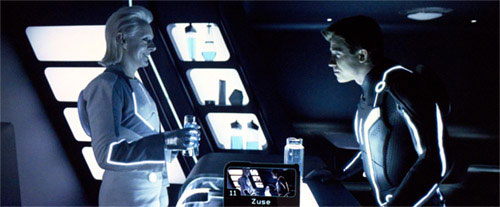
Fortunately, there have been more excellent Blu-ray movie releases in this early-ish stage in its life than there ever were on the DVD format, and in fact, nearly any disc made from a digital intermediate source (in other words, just about any modern film) has a fighting chance of looking absolutely excellent on BD without the need for any in-TV sharpening. Discs like these – for example, Tron: Legacy, Unstoppable, and True Grit (to give three fairly random and recent examples) all looked great on the Sony Bravia KDL-46HX923 LED TV. The only inaccuracy we spotted was with the familiar blue oceans in Studio Ghibli’s animated film Ponyo, which looked less aquamarine and more purple, due to the HX923’s slight colour inaccuracy with blue. Still, we had very few complaints with the KDL46HX923 when watching Blu-ray material, and were very happy with the images it was putting out.
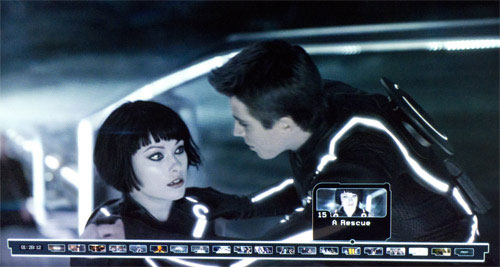
The KDL-46HX923 gave us a fairly decent gaming experience, with 31ms of input lag (in both the “Game” and “Graphics” modes). Accordingly, first-person shooter games (Halo: Reach) required us to re-adjust to slightly tighter-feeling, weighty controls than would have been ideal. Slower-paced games that don’t require lightning-fast reflexes (role-playing games, for example) wouldn’t feel in the slightest bit out of the ordinary, though.
It’s encouraging to see that unlike many TV manufacturers, Sony hasn’t given up on local-dimming LCD displays, and has managed to build this technology into a slim HDTV design so that it can still appeal to size-zero-inclined buyers. The KDL-46HX923 is a fairly capable 2D HDTV, its biggest strengths certainly being its local-dimming-assisted contrast performance and its impressive viewing angle quality; with colours retaining a good amount of richness even when the TV is viewed from the sides. However, even these impressive attributes still aren’t on the level of considerably less expensive Plasma TVs.
As such, we do have to say that this 3D-capable HDTV’s biggest downfall is its price. Sony’s top-end televisions have never been cheap, but that doesn’t change the fact that at around £2000 (or £2500 if we’re talking closer to the RRP), the Sony KDL-46HX923 is a very expensive set – even when you consider the bundled 3D glasses (two pairs) and webcam/ microphone unit for Skype calls. For buyers who want the contrast benefits of a locally-dimmed LED LCD TV and simply don’t like PDP (Plasma Display Panel) technology, the Sony HX923 is the only choice (at least in the UK at this time of writing), although the cost of entry is high.

<!-- google_ad_client = 'pub-2887677957235196'; google_ad_slot = '0693194791'; google_ad_width = 336; google_ad_height = 280; //-->